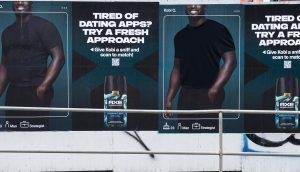Digital media may get all the hype these days, but Canadians are interacting with advertising via a variety of media touchpoints, a new study from Aegis Media reveals.
The new data was released at a swanky event at the Royal Ontario Museum’s C5 restaurant last night, hosted by Aegis Media, alongside its agencies Carat Canada and Vizeum. The event was in promotion of the media agencies’ new Consumer Connection Study, created to examine the ways in which Canadians interact with media today, as well as Canadians’ product and lifestyle preferences.
In an interview at the event, Jennifer Clark, VP, consumer insights, Aegis Media Canada, explained why the study is significant for Aegis, its agencies and its clients.
‘It’s single source Canadian data, which has not been available in the past. So many times marketers are making communication decisions based on media usage decisions and this study goes much deeper and it allows us to understand communication behaviours, how receptive consumers are to various media channels and touchpoints, and whether that media can actually achieve their communication goals. So much has been based on hypotheses; now we can actually quantify that information for our clients.’
A global effort, the study in Canada covered a nationally representative sample of 11,432 people between the ages of 15 and 64, with 8,326 English-speaking Canadians and just over 3,000 Francophones. It was conducted between April and August of this year. Globally, over 180,000 people were polled.

A selection of media-centric topline data was released yesterday, via press release and at the C5 event. Marketers and media pros targeting a young demo will be pleased to find that 38% of 18 to 24 year olds in the study said they find TV ads interesting and provide a cultural touchpoint; this demo was also 17% more likely to agree with this statement than all respondents.
This demo was also found to be 89% more likely to have used a mobile to interact with a billboard, if they found the ad interesting.
Almost a third (28%) of 15- to 17-year-olds said they agreed online ads can improve the way they perceive a brand, and are 58% more likely to agree that online advertising can increase their purchase intention. Eighteen- to 24-year-olds were also 87% more likely to become a fan of a brand, TV show, film or celebrity online.
And the kicker: 40% of those polled between 15 and 34 years old said they will search for more information online after seeing something that interested them on TV.
‘One of the things that did surprise me is that younger adults are more receptive to advertising than we thought,’ Clark said, when asked what findings surprised her the most. ‘Everybody hypothesized that ‘Oh, they just tune [ads] out, they’re not engaged with it.’ We found that if an advertiser can provide entertainment, something of interest, and access to content that that demographic really values, then they are willing to engage with that advertiser.’
Additional data released at the C5 event included the fact that Canadian men are 47% more likely than women to check their emails via their smartphones by 9 a.m.; 15- to 17-year-olds are okay with advertising if it means they get something for free, but are less inclined to agree with that statement when it comes to print advertising; and people who own a smartphone are 36% more likely to agree with the statement that OOH influences their decision to buy a product.
Photo: Aegis’ Jennifer Clark (left) and Carat’s Caroline Gianias


















